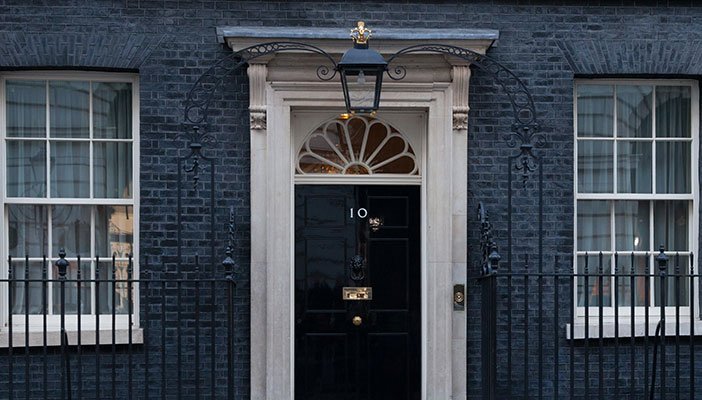Government gives sighted guiding in England the go ahead
In a win for our World Upside Down campaign, the Government has confirmed that blind and partially sighted people in England can be guided by people outside their household. We’ve put together guidance to help explain how to minimise the risks.

For months, RNIB has been calling for clear confirmation on how blind and partially sighted people can be guided safely during social distancing. This gap in public health information has caused lots of uncertainty, but we’re pleased that after persistently raising this issue, the Department of Health and Social Care (DHSC) has finally issued “Supporting people outside of their home” guidance.
This follows an announcement by the Scottish Government in June, and more recently, the publication of our guidance in Northern Ireland, and guidance by Public Health Wales. This means that all parts of the UK now have confirmation, that blind and partially sighted people can be guided by someone living outside their household if necessary.
Our guidance on sighted guiding
We’ve now put together sighted guiding guidance, building on the DHSC information, to explain how guiding can be provided in different circumstances. If you need sighted guiding from family or friends, who live in different households, our guidance explains how this can be done safely. And for services like supermarkets, hospitals, and public transport, our guidance explains how staff and volunteers can provide sighted guidance, and what additional precautions to take.
Some of the key steps for safe guiding include:
- Both individuals wearing face coverings (unless exempt under Government rules).
- Practising good hand hygiene before, during and after guiding.
- Limiting the time spent within two metres of each other.
- Only making journeys and activities permitted in Government guidance. You can find out more in the Government What you can and can’t do information.
- When being supported by volunteers or staff, the person being guided provides their name and contact number, in case coronavirus contact tracing becomes necessary.
The importance of sighted guiding
Sighted guiding provides support for a blind or partially sighted person to safely negotiate an unfamiliar environment. It involves the person being guided lightly holding their sighted guider’s elbow, standing slightly behind and to the left or right. While moving, the guide will talk to the person being guided, to provide more information about any immediate hazards.
Previously under social distancing rules, a person with sight loss could be guided by a sighted person if they lived in the same household, or if they were able to form a support bubble with a sighted household. But this isn’t possible for many blind or partially sighted people, and it was very unclear if these people could receive sighted guiding at all. This means that many more day-to-day activities have been off-limits for a significant number of blind and partially sighted people.
The impact of social distancing
Two thirds of blind and partially respondents to our recent survey said they felt less independent since lockdown. Largely, this was a result of trying to follow rules around social distancing, which is why this new guidance is so important.
Responding to the DHSC announcement on sighted guiding, RNIB Chair Eleanor Southwood said:
"Restrictions introduced because of coronavirus have had a unique and disproportionate impact on blind and partially sighted people. For those who rely on being guided by others to get out, exercise or to carry out daily tasks, requirements to avoid close contact with people from outside their household has meant that their independence has been drastically reduced."
"For months we have been calling for official guidance on how blind and partially sighted people can be guided safely, through our World Upside Down campaign, and we’re pleased to see this being formally announced at last."







